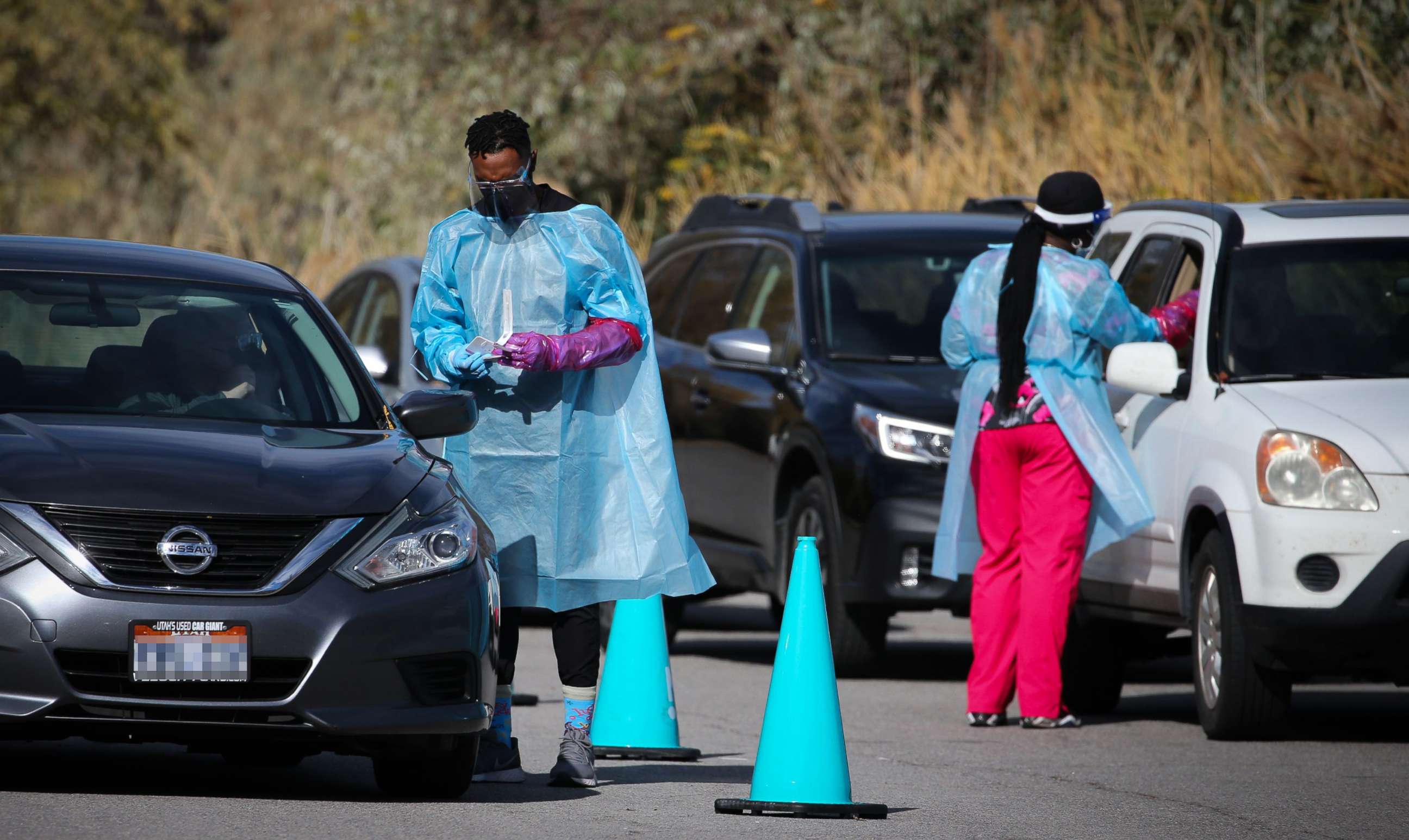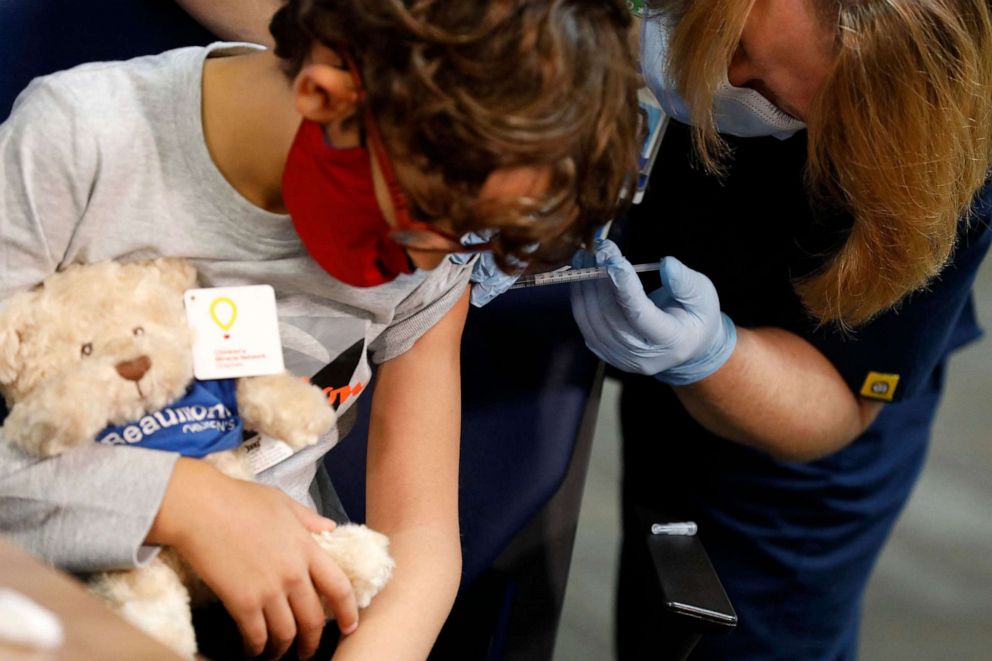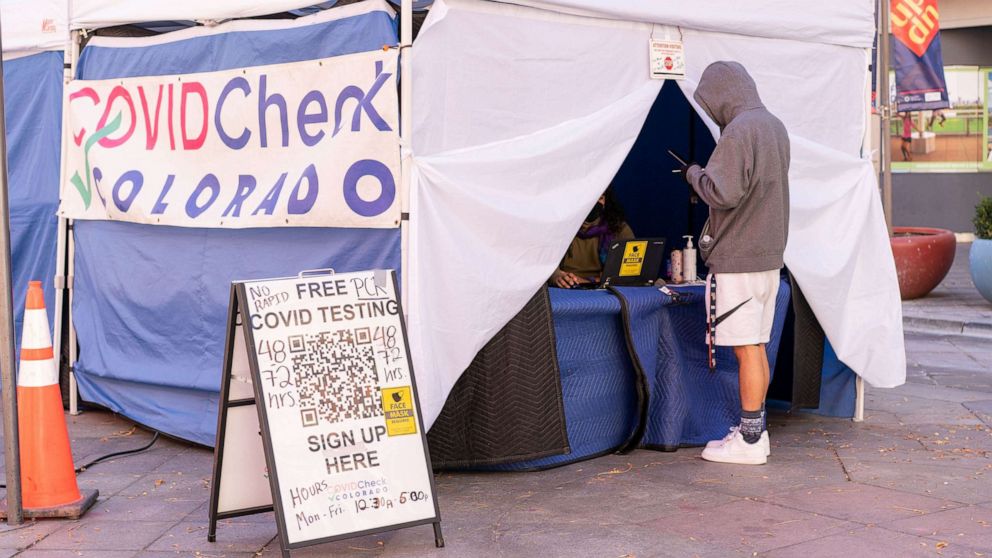Why experts say COVID threat looms with winter
State and local health officials are once again raising the alarm about the renewed threat of COVID-19 spread in communities across the country as people head indoors during the colder months and are set to gather for the holidays.
"Winter is coming," California Gov. Gavin Newsom warned during a press conference on Tuesday. "COVID is not taking the winter off."
For weeks throughout the early fall, the U.S. had seen steady declines in coronavirus infections and hospitalizations, offering hope that perhaps the pandemic was finally subsiding in the U.S. after a significant summer surge across the South and a renewed push for vaccinations.
However, the U.S. appears to be once again at an inflection point, with cold weather setting in across much of the North, COVID-19 restrictions relaxed and gatherings growing more frequent. On average, the U.S. is reporting approximately 75,000 new COVID-19 cases each day, according to federal data, still significantly lower than the country's most recent surge over the summer, but higher than at any point last spring.
Since mid-October, the average number of new COVID-19 cases has risen by approximately 17%, marking the first consistent increase in national cases in nearly 10 weeks. While some health officials caution that case numbers may not be the best indicator of the prevalence of COVID-19, hospitalizations are also on the rise in a number of states.

Experts say a confluence of factors is likely driving the country's recent uptick besides cold weather -- largely the more than 107 million Americans who remain completely unvaccinated and continue to account for the majority of new infections and hospitalizations.
People who have not been fully vaccinated are 6.1 times more likely to test positive with the virus and 11.3 times more likely to die from it, compared with people who are vaccinated, according to federal data.
But there is also the factor of waning immunity for those who are fully inoculated, something that other countries have seen as well.
"Lowering temperatures, increased population mixing, reduced masking, fully open schools and the more contagious delta variant all contribute to the increases in cases and hospitalizations in many parts of the country. Despite widespread availability of the vaccine, we still have pockets of under-vaccinated communities that consistently provide opportunities for the virus to spread," said John Brownstein, an epidemiologist at Boston Children's Hospital and an ABC News contributor.
"While we should all be more optimistic than this time last year, we are not yet in a position to declare victory on the pandemic," Brownstein said.
COVID-19 cases on the rise in nearly 2 dozen states

Over the last two weeks, 22 states -- many of them with colder temperatures -- have seen an uptick in daily cases of 10%.
Similarly, 14 states -- Arizona, Colorado, Connecticut, Iowa, Kansas, Michigan, Minnesota, Missouri, New Hampshire, Rhode Island, South Dakota, Utah, Vermont and Wisconsin -- have seen an increase of about 10% or more in hospital admissions over the last week.
And after nearly 10 weeks of declines, national hospitalizations have also begun to increase. Although hospitalizations have declined significantly from the country's summer surge, when more than 104,000 patients were hospitalized at one time, 47,000 patients currently in the hospital with COVID-19 -- an increase of 2,000 from last week.

"We need to stop talking as though covid is over," Dr. Peter Hotez, dean of the National School of Tropical Medicine at Baylor College of Medicine in Houston, tweeted last week. "More than 40% of the country remains unvaccinated. That's a lot of warm water for hurricane delta. I'm concerned about yet another surge beginning after Thanksgiving (just like last year)."
Jennifer Nuzzo, epidemiology lead at the Johns Hopkins University Coronavirus Resource Center, called the stall in the national decline "worrisome."
"We're stalling at a level of weekly case numbers that are still well above what we saw at the lower periods at the end of June and in early July," Nuzzo said during a briefing last week. "There are a number of states where these increases have persisted for two or more weeks, and that's usually the metric we look for to say a trend is happening. So there are some early signs that we're headed in the wrong direction."
Even states with high vaccination rates see upticks
Despite states across the Northeast boasting high vaccination rates, with several jurisdictions reporting full vaccination rates above 70%, several states are struggling through their worst surge yet.
In Maine, COVID-19 infections and hospitalizations have been steadily rising across the state, despite the fact more than 70% of the state's total population fully inoculated.
Since the onset of the pandemic, LifeFlight of Maine, which provides critical care transport across the state, has not seen a decline in the steady stream of patients in need of urgent care.
"The number of COVID patients we're transporting is remaining the same as it was for the last 19 months. We're continuing to say the hospitals are full to capacity," Thomas Judge, executive director of LifeFlight of Maine, told ABC News.
This issue is not unique to Maine, Judge explained, adding that his colleagues across the country, and in the Northeast, are all still struggling.
"Because the hospitals can't absorb all these patients, they're just under such pressure for beds, especially the ICU beds," Judge said.
Judge explained that they are frequently flying patients out of state, at times, as far away as Connecticut or New York, depending on bed availability.
"We're taking patients across state lines routinely. Just because of these challenging beds, and we're taking patients much further than we would normally take them which you can imagine," Judge added. "The patients we're seeing are primarily unvaccinated and the vast majority of patients in the ICU, and on ventilators are unvaccinated, and that continues to be the challenge."

Vermont sees record surge in COVID-19 infections
In neighboring Vermont, which has the highest vaccination rate of any state with nearly 72% of the population fully vaccinated, COVID-19 cases increased by 50% over the last 14 days. According to a recent report by the Department of Financial Regulation, people who are not fully vaccinated continue to report infection rates 3.7 times higher, per capita, compared to people who are fully vaccinated.
Further, according to the report, 67% of hospitalizations, over the last seven days, are among the unvaccinated.
The patterns observed in communities with current spikes in infections and hospitalizations suggest that they are driven not only by those still unvaccinated, but also the decline of vaccine efficacy over time.
"Waning immunity likely is also contributing to increases in cases especially among those with increased vulnerability because of underlying conditions. Boosters can at least play a supporting role in averting a larger surge this winter," Brownstein said.
Experts say the key to getting through the winter will ultimately be to get more Americans fully vaccinated and boosted when eligible.
"As we go into the winter months with the challenge of a respiratory infection being worse in the winter months, we can get through this if we really put a lot of effort into getting as many people vaccinated as we possibly can," Dr. Anthony Fauci, director of the National Institute of Allergy and Infectious Diseases said in an interview with NPR, this week.
Health experts also say that it will also be critical for people to get the flu vaccine, in addition to their COVID-19 shots, as both vaccines only protect against their respective diseases. According to the Centers for Disease Control and Prevention, it is safe to get the COVID and flu vaccines during the same visit.
At this time, booster shots are recommended for anyone over the age of 18 who has received the Johnson & Johnson vaccine. Moderna and Pfizer recipients are encouraged to get a booster shot six months after receiving their second dose, if they are over the age of 65, have an underlying medical condition or are at high risk for exposure. On Tuesday, Pfizer requested the Food and Drug Administration allow all Americans over 18 to be eligible for booster shots.




